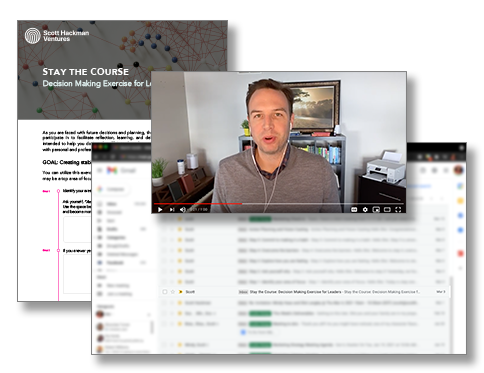In his book Thirteeners, Daniel F. Prosser states that an alarmingly high 87% of businesses fail to fully execute their strategy. That means only 13% of companies do execute on their strategic plan effectively (hence the term Thirteeners).
The key to becoming a Thirteener is connectedness within an organization. Psychiatrist Dr. Edward M. Hallowell, defines connectedness in this way:
“While ambition drives us to achieve, connectedness is my word for the force that urges us to ally, to affiliate, to enter into mutual relationships, to take strength and to grow through cooperative behavior.”
Essentially, connectedness is establishing a workplace culture where the entire workforce understands the strategy, is included in the conversation, and finds personal motivation towards it.
Some of the obstacles to connectedness are lack of clarity and communication. Below, we offer some tips to overcome these barriers.
Overcome These Barriers to Improve Strategic Planning
1. LACK OF CLARITY
86% of executive teams spend less than 1 hour per month discussing strategy.
If leaders do not have a clear picture of the organizational strategy, it makes it difficult to communicate it throughout the organization. The questions below can help begin the conversations necessary to gain clarity.
-
- How clear is your strategy?
-
- What are the specific milestones?
-
- What are your “guardrails” (the guidelines used to determine whether something aligns with your strategy)?
2. LACK OF COMMUNICATION
95% of a company’s workforce doesn’t understand its strategy
Once your strategy is clear, you can begin communicating it throughout the organization. If the workforce is clear on strategy, they’ll likely be more invested in their individual part. Here are a few prompts to consider around communication:
-
- Who needs to know your strategy?
-
- How will you share it so others care/remember?
-
- What means will you use to communicate your strategy?
3. LACK OF CONNECTEDNESS
The purpose of clarity and communication is to lead to connectedness, which is essential to the success of any strategy.
Some signs of a connectedness culture are:
-
- Leaders effectively communicate the strategy throughout the organization
-
- Leaders connect individuals to their unique part of the strategy, tapping into innate motivations, and hold them accountable
-
- Leaders delegate tasks aligned with individual strengths
-
- Leaders demonstrate genuine care for their direct reports
-
- Employees feel valued as individuals, not “just a number”
Here are some prompts to start the conversation around connectedness:
-
- What relational gaps are in your organization?
-
- What relational connection can you infuse in your strategy?
-
- What are the emotions on the feelings wheel you want to see?

We’ll leave you with a final thought from Daniel Posser:
Clearly Define Your Strategic Plan
We designed a free, one-page tool to help you clearly define and capture your business strategy. Click the link below to access the strategic planning template.





